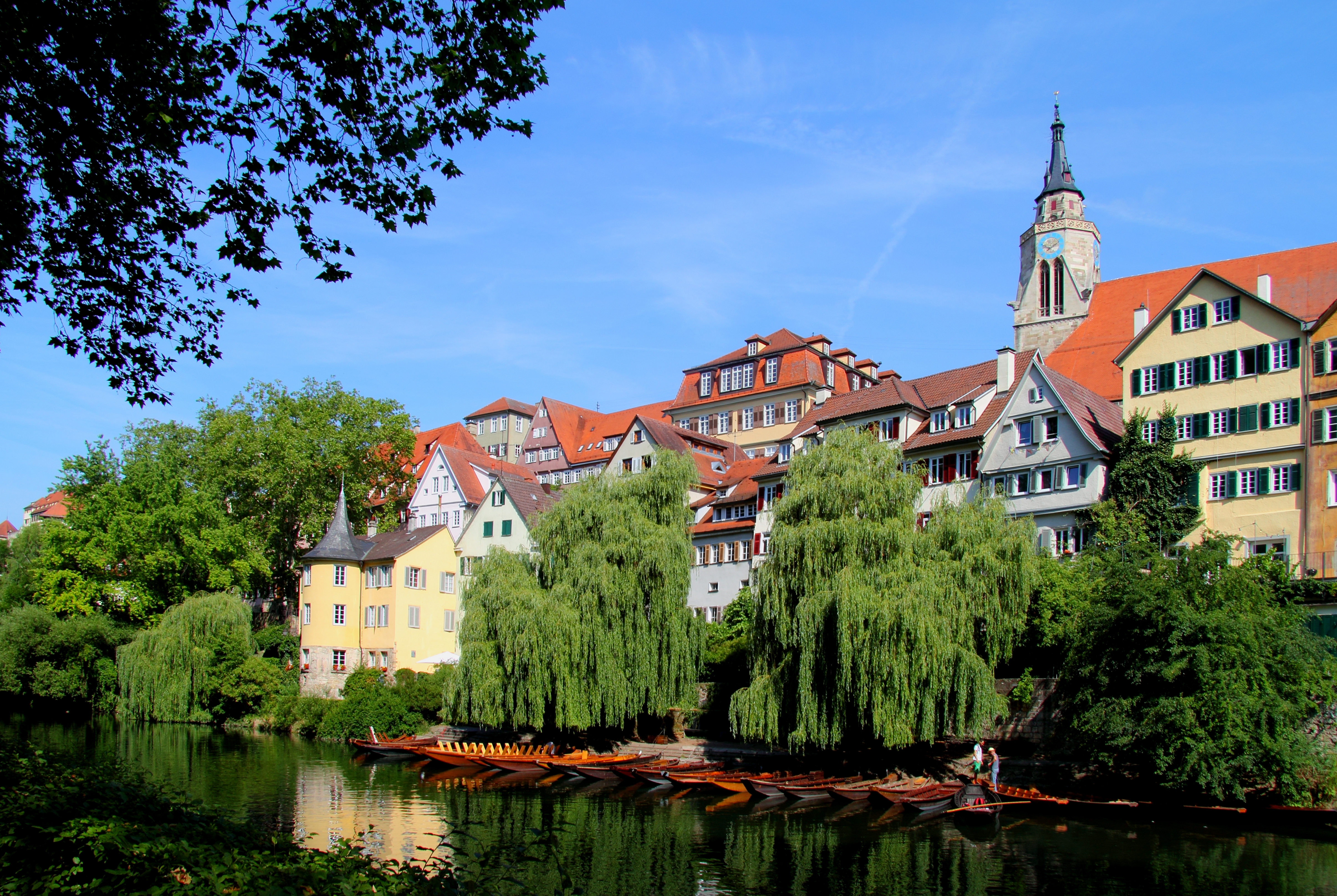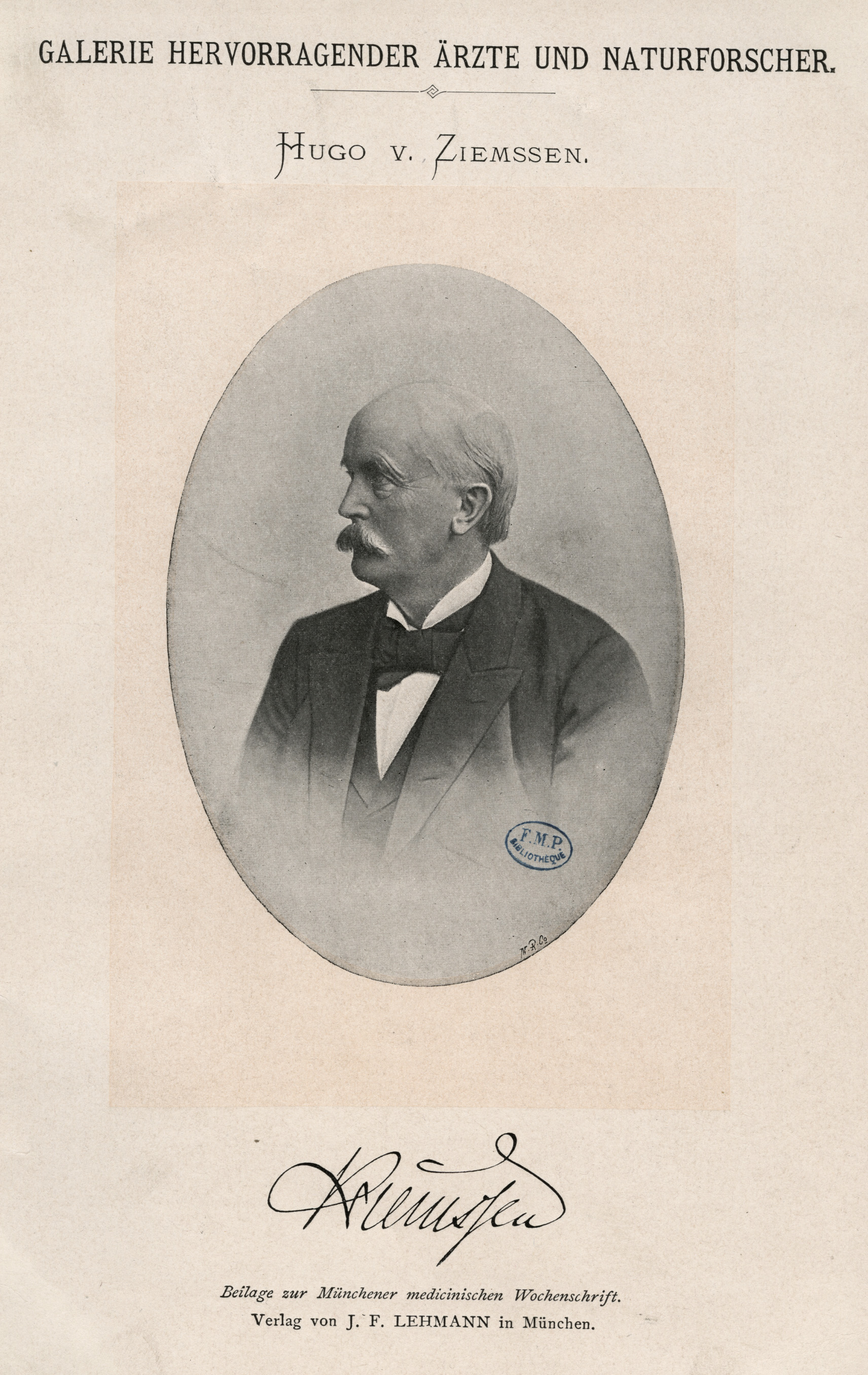|
Felix Victor Birch-Hirschfeld
Felix Victor Birch-Hirschfeld (2 May 1842 – 19 November 1899) was a German pathologist who was a native of Kluvensieck bei Rendsburg. Biography In 1867 he received his medical doctorate from the University of Leipzig, where he studied under Carl Reinhold August Wunderlich (1815–1877) and Ernst Leberecht Wagner (1828–1888). In 1870 he became a prosector at the city hospital in Dresden, and in 1885 returned to Leipzig, where he succeeded Julius Cohnheim (1839–1884) as chair of pathological anatomy. One of his better known assistants was pathologist Christian Georg Schmorl (1861–1932). Birch-Hirschfeld made important contributions in several facets of pathological medicine. He is known for his work in the field of bacteriology, with tuberculosis being the primary focus in regards to infectious diseases. In 1898 he described the unitary nature of nephroblastoma. Associated eponym * "Birch-Hirschfeld stain": A stain that was formerly used for demonstrating ... [...More Info...] [...Related Items...] OR: [Wikipedia] [Google] [Baidu] |
Felix Victor Birch-Hirschfeld
Felix Victor Birch-Hirschfeld (2 May 1842 – 19 November 1899) was a German pathologist who was a native of Kluvensieck bei Rendsburg. Biography In 1867 he received his medical doctorate from the University of Leipzig, where he studied under Carl Reinhold August Wunderlich (1815–1877) and Ernst Leberecht Wagner (1828–1888). In 1870 he became a prosector at the city hospital in Dresden, and in 1885 returned to Leipzig, where he succeeded Julius Cohnheim (1839–1884) as chair of pathological anatomy. One of his better known assistants was pathologist Christian Georg Schmorl (1861–1932). Birch-Hirschfeld made important contributions in several facets of pathological medicine. He is known for his work in the field of bacteriology, with tuberculosis being the primary focus in regards to infectious diseases. In 1898 he described the unitary nature of nephroblastoma. Associated eponym * "Birch-Hirschfeld stain": A stain that was formerly used for demonstrating ... [...More Info...] [...Related Items...] OR: [Wikipedia] [Google] [Baidu] |
Staining
Staining is a technique used to enhance contrast in samples, generally at the microscopic level. Stains and dyes are frequently used in histology (microscopic study of biological tissues), in cytology (microscopic study of cells), and in the medical fields of histopathology, hematology, and cytopathology that focus on the study and diagnoses of diseases at the microscopic level. Stains may be used to define biological tissues (highlighting, for example, muscle fibers or connective tissue), cell populations (classifying different blood cells), or organelles within individual cells. In biochemistry, it involves adding a class-specific ( DNA, proteins, lipids, carbohydrates) dye to a substrate to qualify or quantify the presence of a specific compound. Staining and fluorescent tagging can serve similar purposes. Biological staining is also used to mark cells in flow cytometry, and to flag proteins or nucleic acids in gel electrophoresis. Light microscopes are used for ... [...More Info...] [...Related Items...] OR: [Wikipedia] [Google] [Baidu] |
1842 Births
__NOTOC__ Year 184 ( CLXXXIV) was a leap year starting on Wednesday (link will display the full calendar) of the Julian calendar. At the time, it was known as the Year of the Consulship of Eggius and Aelianus (or, less frequently, year 937 ''Ab urbe condita''). The denomination 184 for this year has been used since the early medieval period, when the Anno Domini calendar era became the prevalent method in Europe for naming years. Events By place China * The Yellow Turban Rebellion and Liang Province Rebellion break out in China. * The Disasters of the Partisan Prohibitions ends. * Zhang Jue leads the peasant revolt against Emperor Ling of Han of the Eastern Han Dynasty. Heading for the capital of Luoyang, his massive and undisciplined army (360,000 men), burns and destroys government offices and outposts. * June – Ling of Han places his brother-in-law, He Jin, in command of the imperial army and sends them to attack the Yellow Turban rebels. * Winter &ndash ... [...More Info...] [...Related Items...] OR: [Wikipedia] [Google] [Baidu] |
List Of Pathologists
A list of people notable in the field of pathology. A * John Abercrombie, Scottish physician, neuropathologist and philosopher. * Maude Abbott (1869–1940), Canadian pathologist, one of the earliest women graduated in medicine, expert in congenital heart diseases. * Emile Achard (1860–1944), French internist and pathologist. * A. Bernard Ackerman (1936–2008), American dermatopathologist & dermatologist * Lauren Ackerman (1905–1993), American pathologist and one of the fathers of Surgical pathology. * Theodor Ackermann (1825–1896), German pathologist. * Albert Wojciech Adamkiewicz (1850–1921), Polish pathologist, (see Artery of Adamkiewicz). * W. Stewart Alexander, contemporary British pathologist (see Alexander disease). * Dame Ingrid Allen, Northern Irish neuropathologist. * Friedrich August von Ammon (1799–1861), German ophthalmologist and pathologist. * Gabriel Andral (1797–1876) French pathologist. * Nikolay Anichkov (1885–1964), Russian patholo ... [...More Info...] [...Related Items...] OR: [Wikipedia] [Google] [Baidu] |
Pathology
Pathology is the study of the causes and effects of disease or injury. The word ''pathology'' also refers to the study of disease in general, incorporating a wide range of biology research fields and medical practices. However, when used in the context of modern medical treatment, the term is often used in a narrower fashion to refer to processes and tests that fall within the contemporary medical field of "general pathology", an area which includes a number of distinct but inter-related medical specialties that diagnose disease, mostly through analysis of tissue, cell, and body fluid samples. Idiomatically, "a pathology" may also refer to the predicted or actual progression of particular diseases (as in the statement "the many different forms of cancer have diverse pathologies", in which case a more proper choice of word would be " pathophysiologies"), and the affix ''pathy'' is sometimes used to indicate a state of disease in cases of both physical ailment (as in card ... [...More Info...] [...Related Items...] OR: [Wikipedia] [Google] [Baidu] |
Tübingen
Tübingen (, , Swabian: ''Dibenga'') is a traditional university city in central Baden-Württemberg, Germany. It is situated south of the state capital, Stuttgart, and developed on both sides of the Neckar and Ammer rivers. about one in three of the 90,000 people living in Tübingen is a student. As of the 2018/2019 winter semester, 27,665 students attend the Eberhard Karls University of Tübingen. The city has the lowest median age in Germany, in part due to its status as a university city. As of December 31, 2015, the average age of a citizen of Tübingen is 39.1 years. The city is known for its veganism and environmentalism. Immediately north of the city lies the Schönbuch, a densely wooded nature park. The Swabian Alb mountains rise about (beeline Tübingen City to Roßberg - 869 m) to the southeast of Tübingen. The Ammer and Steinlach rivers are tributaries of the Neckar river, which flows in an easterly direction through the city, just south of the medieval old ... [...More Info...] [...Related Items...] OR: [Wikipedia] [Google] [Baidu] |
Carl Jakob Adolf Christian Gerhardt
Carl Jakob Adolf Christian Gerhardt (there are several variations regarding the arrangement of his 3 middle names; 5 May 1833 – 22 July 1902) was a German internist born in Speyer. Biography He studied medicine at the University of Würzburg, earning his doctorate in 1856. Subsequently he was an assistant to Heinrich von Bamberger (1822–1888) and Franz von Rinecker (1811–1883) in Würzburg, and worked under Wilhelm Griesinger (1817–1868) in Tübingen. In 1860 he received his habilitation in Würzburg, and during the following year was appointed professor of medicine and head of the department of internal medicine at the University of Jena. In 1872 he returned to the University of Würzburg to fulfill similar duties. In 1885 he was successor to pathologist Friedrich Theodor von Frerichs (1819–1885) at the Charité in Berlin, where he established the second internal medicine clinic. At Berlin, one of his assistants was immunologist Paul Ehrlich (1854–1915). ... [...More Info...] [...Related Items...] OR: [Wikipedia] [Google] [Baidu] |
Spleen
The spleen is an organ found in almost all vertebrates. Similar in structure to a large lymph node, it acts primarily as a blood filter. The word spleen comes .σπλήν Henry George Liddell, Robert Scott, ''A Greek-English Lexicon'', on Perseus Digital Library The spleen plays very important roles in regard to red blood cells (erythrocytes) and the . It removes old red blood cells and holds a reserve of blood, which can be valuable in case of [...More Info...] [...Related Items...] OR: [Wikipedia] [Google] [Baidu] |
Liver
The liver is a major organ only found in vertebrates which performs many essential biological functions such as detoxification of the organism, and the synthesis of proteins and biochemicals necessary for digestion and growth. In humans, it is located in the right upper quadrant of the abdomen, below the diaphragm. Its other roles in metabolism include the regulation of glycogen storage, decomposition of red blood cells, and the production of hormones. The liver is an accessory digestive organ that produces bile, an alkaline fluid containing cholesterol and bile acids, which helps the breakdown of fat. The gallbladder, a small pouch that sits just under the liver, stores bile produced by the liver which is later moved to the small intestine to complete digestion. The liver's highly specialized tissue, consisting mostly of hepatocytes, regulates a wide variety of high-volume biochemical reactions, including the synthesis and breakdown of small and complex molecu ... [...More Info...] [...Related Items...] OR: [Wikipedia] [Google] [Baidu] |
Hugo Wilhelm Von Ziemssen
Hugo (Wilhelm) von Ziemssen (13 December 1829 – 21 January 1902) was a German physician, born in Greifswald. He studied medicine at the universities of Greifswald, Berlin, and Würzburg. In 1863 he was called to the University of Erlangen as a professor of pathology and therapy as well as the director of the medical clinic. In 1874 he relocated to Munich as a professor and director of the general hospital.Thibaut - Zycha, Volume 10 edited by He made advances in [...More Info...] [...Related Items...] OR: [Wikipedia] [Google] [Baidu] |
Rudolf Virchow
Rudolf Ludwig Carl Virchow (; or ; 13 October 18215 September 1902) was a German physician, anthropologist, pathologist, prehistorian, biologist, writer, editor, and politician. He is known as "the father of modern pathology" and as the founder of social medicine, and to his colleagues, the "Pope of medicine". Virchow studied medicine at the Friedrich Wilhelm University under Johannes Peter Müller. While working at the Charité hospital, his investigation of the 1847–1848 typhus epidemic in Upper Silesia laid the foundation for public health in Germany, and paved his political and social careers. From it, he coined a well known aphorism: "Medicine is a social science, and politics is nothing else but medicine on a large scale". His participation in the Revolution of 1848 led to his expulsion from Charité the next year. He then published a newspaper ''Die Medizinische Reform'' (''The Medical Reform''). He took the first Chair of Pathological Anatomy at the University of ... [...More Info...] [...Related Items...] OR: [Wikipedia] [Google] [Baidu] |
Jaundice
Jaundice, also known as icterus, is a yellowish or greenish pigmentation of the skin and sclera due to high bilirubin levels. Jaundice in adults is typically a sign indicating the presence of underlying diseases involving abnormal heme metabolism, liver dysfunction, or biliary-tract obstruction. The prevalence of jaundice in adults is rare, while jaundice in babies is common, with an estimated 80% affected during their first week of life. The most commonly associated symptoms of jaundice are itchiness, pale feces, and dark urine. Normal levels of bilirubin in blood are below 1.0 mg/ dl (17 μmol/ L), while levels over 2–3 mg/dl (34–51 μmol/L) typically result in jaundice. High blood bilirubin is divided into two types – unconjugated and conjugated bilirubin. Causes of jaundice vary from relatively benign to potentially fatal. High unconjugated bilirubin may be due to excess red blood cell breakdown, large bruises, genetic conditions su ... [...More Info...] [...Related Items...] OR: [Wikipedia] [Google] [Baidu] |


.jpg)






